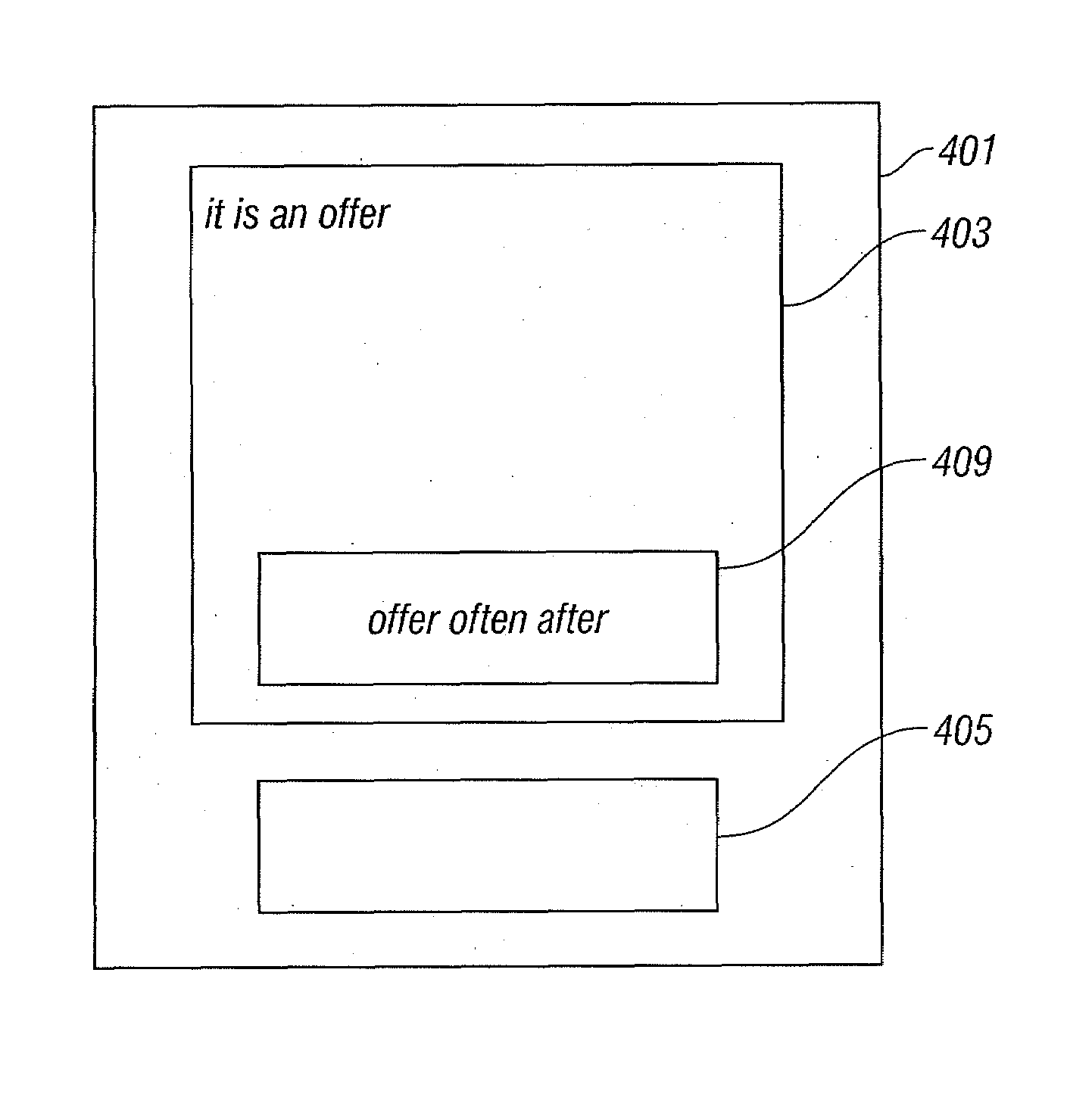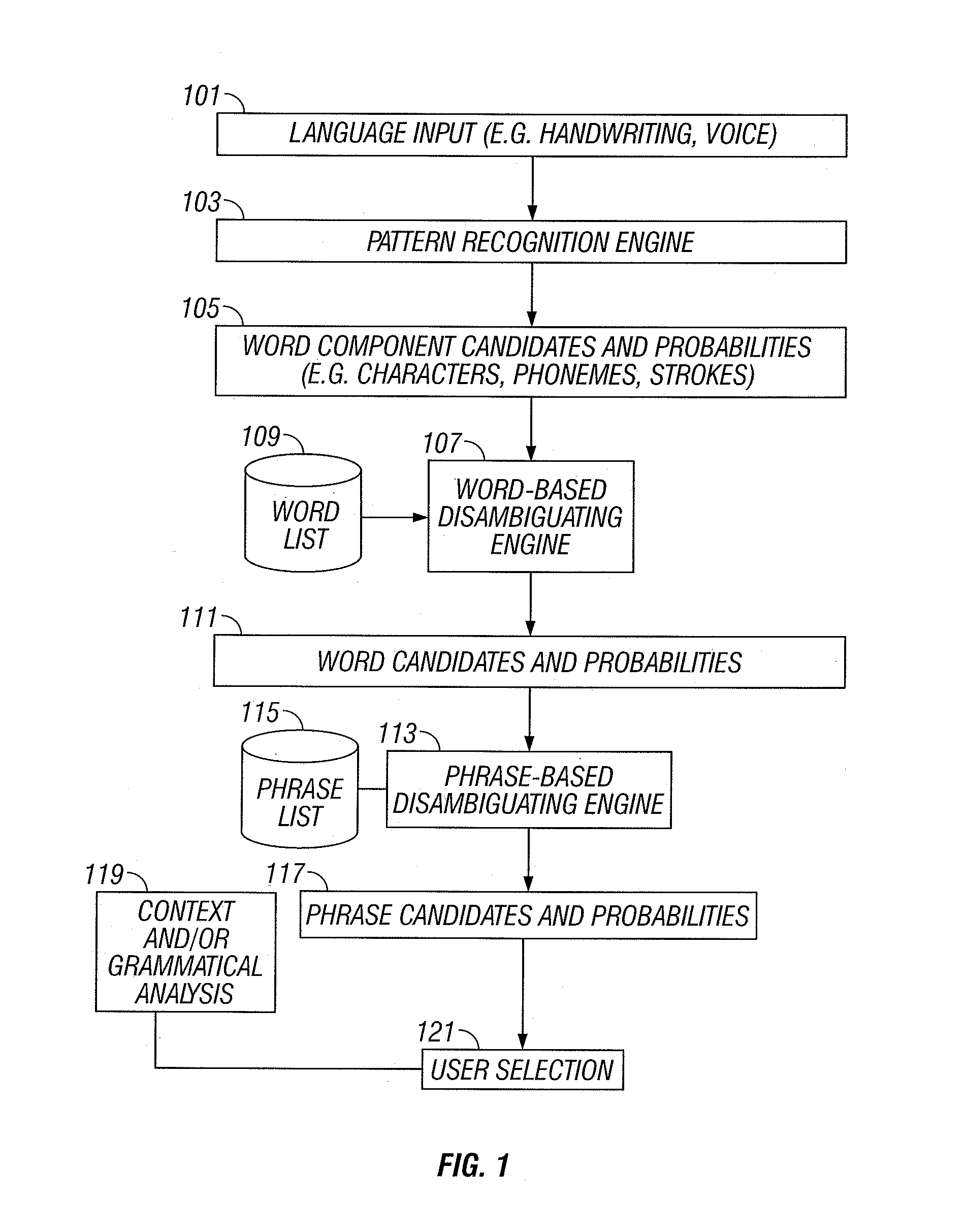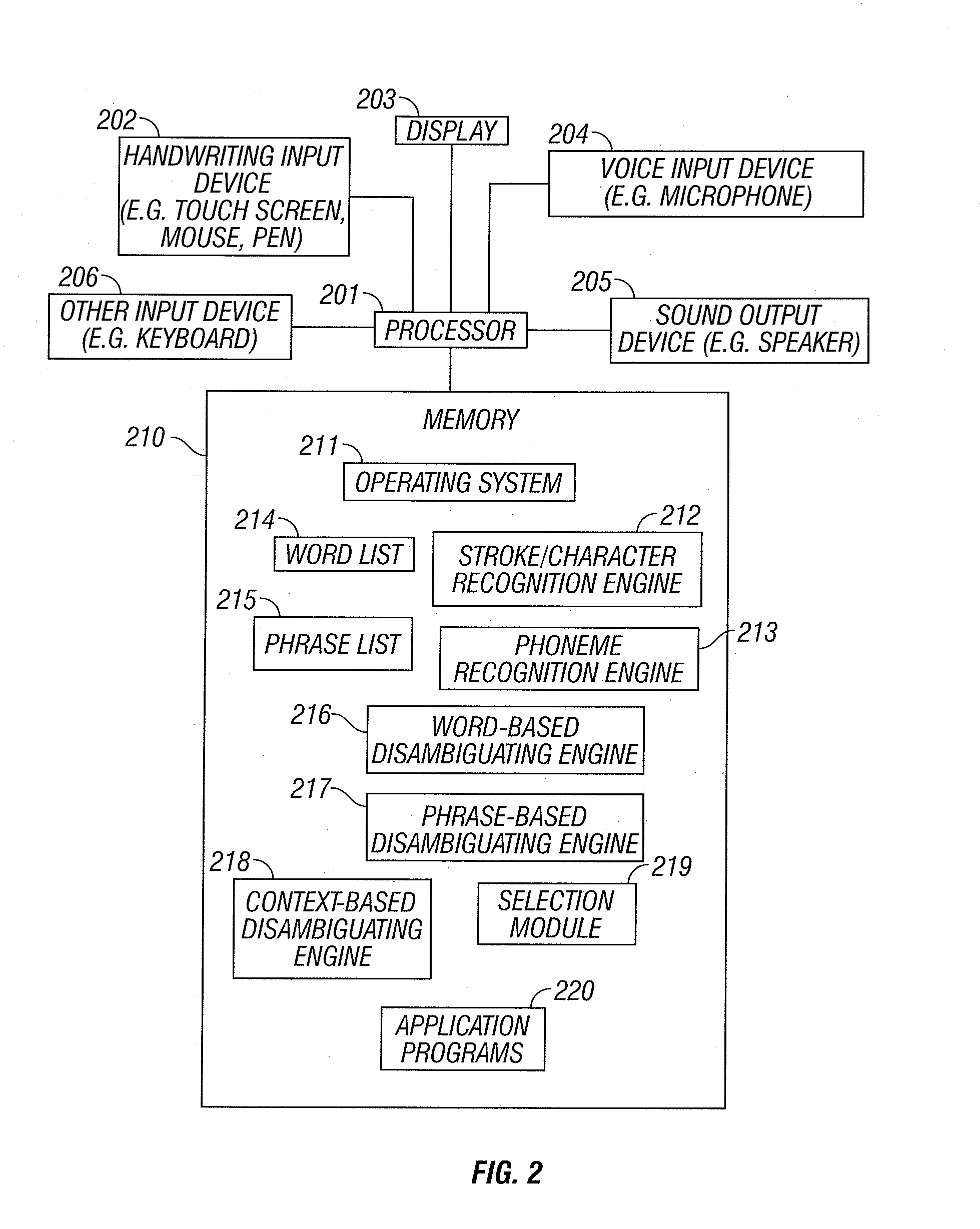Handwriting and voice input with automatic correction
a handwriting and voice input technology, applied in the field of recognition of human language input, can solve the problems of text input on small devices, the size limitation of the effort to produce a smaller portable computer is the keyboard, and the effort to improve the handwriting recognition
- Summary
- Abstract
- Description
- Claims
- Application Information
AI Technical Summary
Benefits of technology
Problems solved by technology
Method used
Image
Examples
Embodiment Construction
[0037]Input methods, such as handwriting recognition and speech recognition, can be important alternatives to traditional keyboard based input methods, especially for small devices, such as handheld computers, personal data assistants, and cellular phones. Traditional handwriting and speech recognition systems face the difficulty of requiring more memory than is available for them on small electronic devices. The invention advances the art of text and speech input on these devices through the use of automatic correction to reduce the memory necessary and processing power requirements for the handwriting or speech recognition engine.
[0038]The invention uses a hybrid approach to improve the handwriting recognition and voice recognition of data processing systems. In one embodiment, a front end recognizes strokes, characters, syllables, and / or phonemes and returns candidates with relative or absolute probabilities of matching to the input. Instead of using the front end to select only ...
PUM
 Login to View More
Login to View More Abstract
Description
Claims
Application Information
 Login to View More
Login to View More - R&D
- Intellectual Property
- Life Sciences
- Materials
- Tech Scout
- Unparalleled Data Quality
- Higher Quality Content
- 60% Fewer Hallucinations
Browse by: Latest US Patents, China's latest patents, Technical Efficacy Thesaurus, Application Domain, Technology Topic, Popular Technical Reports.
© 2025 PatSnap. All rights reserved.Legal|Privacy policy|Modern Slavery Act Transparency Statement|Sitemap|About US| Contact US: help@patsnap.com



